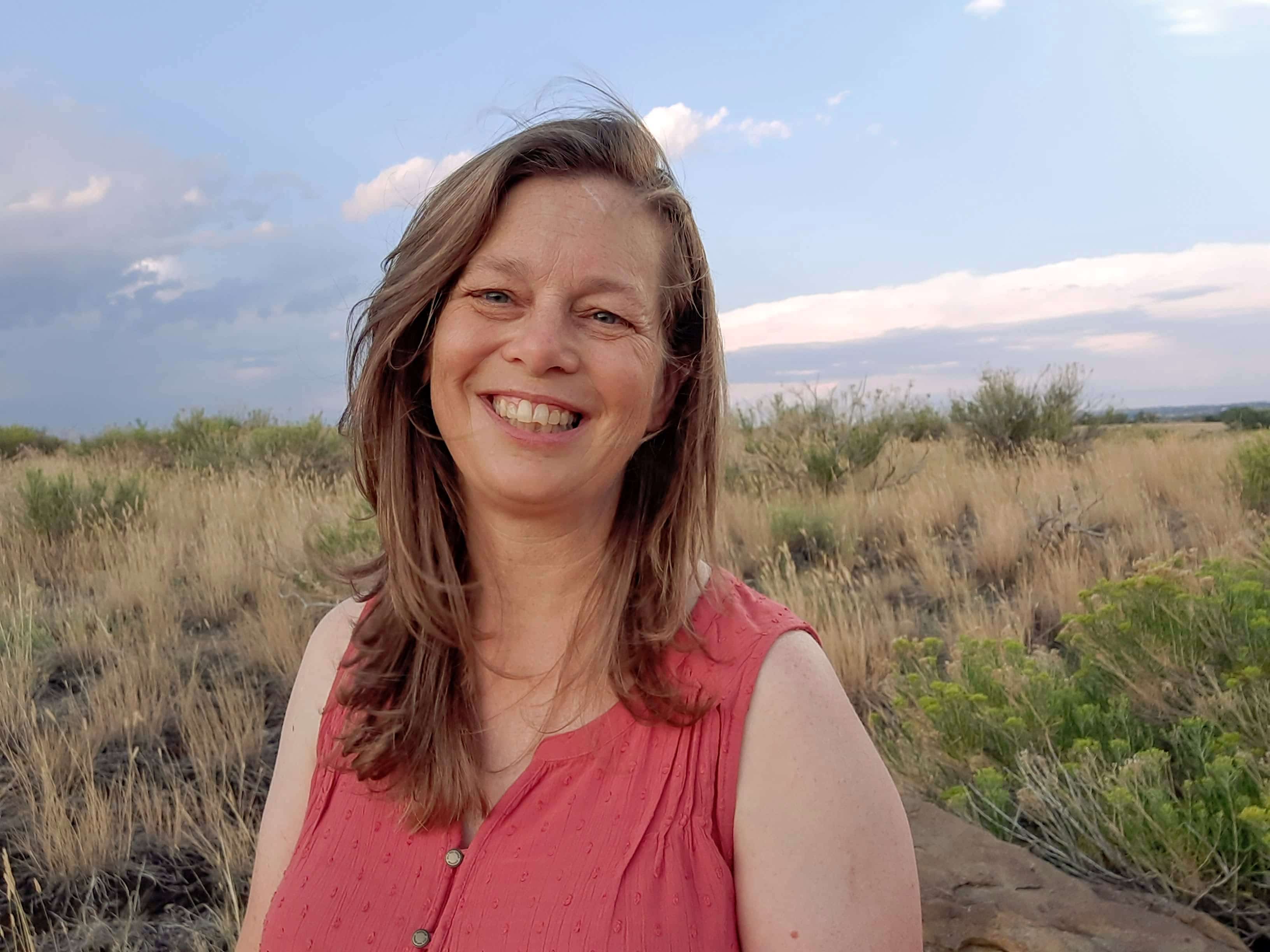
Susan Crick is the Development & Communications Director for Southern Plains Land Trust.
Last Thursday a school bus rumbled down the dirt road to Raven’s Nest Nature Preserve. Forty-three students with their teachers poured out onto the prairie. Any wildlife that was nearby quickly took cover amid the noisy chatter. But as soon as the group was quiet and listening to directions for the day, a western meadowlark sang out loudly.

After arriving at Raven’s Nest Nature Preserve, students had the opportunity to sit silently for a few minutes, sketching and absorbing the wide-open views.
We met the 5th graders from Las Animas Elementary at Raven’s Nest for a field trip to learn about the shortgrass prairie ecosystem. While they all live in the region, the grasslands were new to many of them. The classes were divided into small teams and spread out across the nature preserve to explore. They sat silently for a few minutes, sketching and absorbing the wide-open views. Then they went searching for animal tracks, insects, hiding places, and many other things as part of a scavenger hunt.
Students were introduced to common plants, such as yucca, prickly pear cactus, and blue grama grass. In their nature journals, they drew sketches of the plants and recorded measurements so that they would remember them later. Excitement rang out whenever someone spotted a lizard darting about.
We had discussions about water – a scarce and valuable commodity on the shortgrass prairie. We looked at how the plants and animals that live here are adapted to survive periods of drought and harsh winds. One strategy the students discovered was to go underground. Sink your roots in deep and only push towards the sun when conditions are right. Or, if you are a small animal, hide from the scorching sun in cool burrows during summer. The same subterranean burrow system will provide warmth and comfort during freezing winters.

Fifth grade studens from Las Animas Elementary taking a break near a prairie dog burrow during their field trip to Raven’s Nest Nature Preserve.
For the first time in 70 years, school children stepped through the doorway of Penrose School. They got a glimpse of what class was like in a one-room prairie schoolhouse. Built in 1921 by local homesteading families, school was in session until 1950. The building was then converted into a residence for a while, before being boarded up and abandoned for decades until we took ownership in 2015. Southern Plains Land Trust has been restoring the historic building through generous grant support from the Colorado State Historic Fund. Renovations are almost complete, and we are looking forward to welcoming more visitors to Penrose School to learn about a piece of the land’s history.
After lunch, we visited an active prairie dog colony. From a distance, we watched burrowing owls float from burrow to burrow and heard the calls of prairie dogs before they disappeared from sight. We walked slowly through the prairie dog colony, learned what it meant to be a keystone species, and shared discoveries of bones, an old turtle shell, fresh digging marks, and a snake skin.

Fifth graders explored an active prairie dog colony and discovered how many other wild animals benefit from prairie dogs.
By the end of the field trip, everyone was hot, thirsty, and tired from the day’s outing. But that did not dampen their enthusiasm for the prairie. I asked them what we, as individuals, could do to help protect this prairie that was home to so many wild animals. Answers ranged from “pick up trash” to “keep the land natural.” When we reflected on our adventure, I asked the students what words they would use to describe the prairie. Their responses included the words magnificent, stunning, beautiful, and amazing!
Southern Plains Land Trust has always been laser-focused on our mission to buy, protect, and rewild land for prairie wildlife. We have also learned the importance of connecting with the local communities near our nature preserves. Whether it is through helping school children connect to nature or working collaboratively with ranching neighbors to make fences wildlife-friendly, building relationships within local communities is also important to our work. Together, we will be able to realize our vision of recreating the American Serengeti.

Recent Comments